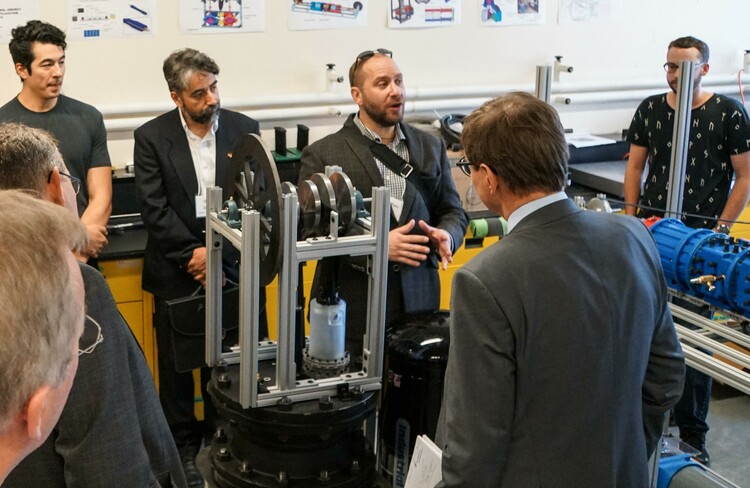Hybrid geothermal power plant being built in Swan Hills
Posted on
Future Energy Systems Principal Investigator Jonathan Banks leads a tour of the Dynamic Thermal Energy Conversion Laboratory in 2017.
Future Energy Systems scientists partner with Razor Energy to retrofit geothermal energy onto an existing oil and gas battery
By KATIE WILLIS
Final engineering is underway for the construction of a pilot project in Swan Hills, Alta., that combines the power of geothermal energy with existing oil and gas infrastructure.
“We’re moving forward with the construction of a hybrid geothermal power plant,” said University of Alberta research associate Jonathan Banks, who is the project lead from the university, which is collaborating with Razor Energy.
“The idea is to retrofit geothermal energy technology onto an existing oil and gas battery."
The plant, projected to begin construction in the fall and connect to the Alberta power grid in the first quarter of 2020, is designed to generate power from two sources that combine to produce about 21 megawatts of power. There are five to seven megawatts of renewable energy from heat to power generation, from a combination of hot water heat and heat recovered from all sources at the battery site. There are an additional 15 megawatts of natural gas-fired generation.
In addition to being environmentally friendly, the technology will reduce the costs and infrastructure required to bring electricity into the Alberta electric system grid.
“We can address our highest field operating cost—power—with renewable generation, which will improve the life, and economics, of a legacy oil-producing operation,” said Doug Bailey, president and CEO of Razor Energy. “From a strategy perspective, we can also leverage a new form of energy revenue by capturing a waste product, in this case heat, and turning it into a productive revenue source, which is power sales.”
Over the summer months, Banks and his team will be involved in the installation of heat exchange infrastructure in the field for testing.
“Over the next one to two years, we’ll scale up to have five megawatts of power being generated from these hot water reservoirs,” he explained. “And we’ll gather real field data to refine our theoretical models to actual outcomes.”
Banks said industry collaborations are critical to allow research to move out into the world in a commercial setting.
“We’ve been looking into the modelling and engineering of these tools for years, and this is how we translate our findings to reality,” he added.
The project received funding from the Climate Change Innovation And Technology Framework through Alberta Innovates, Natural Resources Canada’s Clean Growth Program, and through the U of A’s Future Energy Systems project.